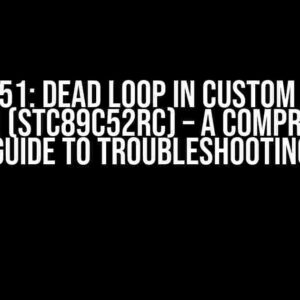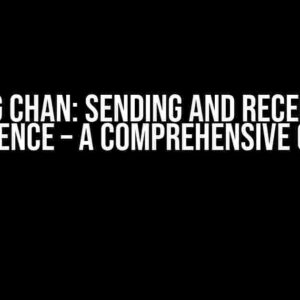Have you ever found yourself stuck in a programming conundrum, trying to locate the index of two identical values in succession within an array or list? Well, worry no more! In this article, we’ll take you on a journey to master the art of finding the index of two identical values in succession for the first time.
Understanding the Problem
Before we dive into the solution, let’s take a closer look at the problem. Imagine you have an array of integers, and you need to find the index of the first occurrence of two identical values in succession. For example:
arr = [1, 2, 3, 4, 5, 6, 7, 8, 8, 9]
In this example, the first occurrence of two identical values in succession is at index 8, where the value 8 appears twice in a row. Your task is to write a program that can find this index efficiently.
Approaches to Solve the Problem
There are several approaches to solve this problem, each with its own strengths and weaknesses. Let’s explore two common methods:
Method 1: Brute Force Approach
The brute force approach involves iterating through the array and checking each element with its adjacent element. If the elements are identical, you’ve found the index you’re looking for.
for (int i = 0; i < arr.length - 1; i++) {
if (arr[i] == arr[i + 1]) {
System.out.println("Index of two identical values in succession: " + i);
break;
}
}
This approach is straightforward, but it has a time complexity of O(n), where n is the length of the array. This can be inefficient for large arrays.
Method 2: Using a Loop with a Conditional Statement
A more efficient approach is to use a loop with a conditional statement to check for identical values. This method has a time complexity of O(n/2), making it more suitable for large arrays.
int i = 0;
while (i < arr.length - 1) {
if (arr[i] == arr[i + 1]) {
System.out.println("Index of two identical values in succession: " + i);
break;
}
i++;
}
This approach is more efficient than the brute force method, but it still has some limitations. Let's explore a more optimized solution.
Optimized Solution
The optimized solution involves using a single loop with a conditional statement to check for identical values. This approach has a time complexity of O(n/2), making it the most efficient solution.
int index = -1;
for (int i = 0; i < arr.length - 1; i++) {
if (arr[i] == arr[i + 1]) {
index = i;
break;
}
}
if (index != -1) {
System.out.println("Index of two identical values in succession: " + index);
} else {
System.out.println("No two identical values in succession found.");
}
This solution is not only efficient but also easy to understand and implement. Let's break it down step by step:
- Initialize the index variable to -1, indicating that no identical values have been found.
- Iterate through the array using a for loop, stopping at the second-to-last element.
- Check if the current element is identical to the next element using a conditional statement.
- If identical values are found, update the index variable with the current index and break out of the loop.
- After the loop, check if the index variable is still -1. If it is, no identical values were found. Otherwise, print the index.
Real-World Applications
Finding the index of two identical values in succession has numerous real-world applications:
- Data analysis: Identifying consecutive identical values can help detect patterns or anomalies in data.
- Quality control: In manufacturing, finding consecutive identical values can indicate a defect or quality issue.
- Algorithm optimization: This problem is often used as a benchmark to test the efficiency of algorithms.
Common Pitfalls and Troubleshooting
When implementing this solution, be aware of the following common pitfalls:
Conclusion
In this article, we've covered the problem of finding the index of two identical values in succession for the first time. We've explored three approaches to solve the problem, including the brute force method, the loop with a conditional statement, and the optimized solution. By following the step-by-step guide and avoiding common pitfalls, you'll be able to efficiently find the index of two identical values in succession in your programming endeavors.
| Method | Time Complexity | Description |
|---|---|---|
| Brute Force | O(n) | Iterate through the array, checking each element with its adjacent element. |
| Loop with Conditional Statement | O(n/2) | Use a loop with a conditional statement to check for identical values. |
| Optimized Solution | O(n/2) | Use a single loop with a conditional statement to check for identical values and break out of the loop when found. |
Remember, finding the index of two identical values in succession is just one of many programming challenges. By mastering this solution, you'll be better equipped to tackle more complex problems in the future.
Frequently Asked Question
Get ready to crack the code and find the index of those sneaky identical values in succession!
Q1: What is the problem we're trying to solve?
We're trying to find the index of the first occurrence of two identical values in succession in a given list or array. It's like finding the hidden twins in a crowd of numbers!
Q2: How do we define "in succession"?
When we say "in succession", we mean that the identical values appear one after the other in the list, without any other values in between. It's like finding two peas in a pod!
Q3: What if there are no identical values in succession?
If there are no identical values in succession, we typically return -1 or a special value indicating that no such pair was found. It's like finding no matching socks in the laundry basket!
Q4: Can we use a simple loop to solve this problem?
Yes, we can use a simple loop to iterate through the list and check each element with the next one. If we find a match, we return the index. It's like going on a treasure hunt through the list!
Q5: What data structure can we use to optimize the solution?
We can use a hash table or dictionary to store the elements we've seen so far and their indices. This allows us to quickly check if an element has a duplicate in succession. It's like using a map to navigate through the list!





